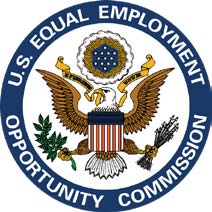 The Harvey Weinstein scandal is bringing necessary attention to the problem of sexual harassment. But that problem is not limited to abusive behavior on the part of big-time movie producers and a few other powerful men. Women are confronted with sexual predators in a wide variety of workplaces.
The Harvey Weinstein scandal is bringing necessary attention to the problem of sexual harassment. But that problem is not limited to abusive behavior on the part of big-time movie producers and a few other powerful men. Women are confronted with sexual predators in a wide variety of workplaces.
Evidence of this can be found in the cases resolved by the Equal Employment Opportunity Commission. In addition to enforcing anti-discrimination rules regarding hiring, pay levels, etc., the EEOC brings lawsuits (or joins existing ones) dealing with harassment.
In Violation Tracker I have collected data on a total of 1,393 resolved EEOC cases since the beginning of 2000 that together have resulted in about $1 billion in penalty payments by employers. Of these, about 300 involved sexual harassment (often in conjunction with other allegations). They have resulted in about $135 million in employer penalties. Here are some of the more significant cases:
In August, Ford Motor agreed to pay $10.1 million to resolve allegations that mangers at two plants retaliated against workers who complained that they were being subjected to sexual (and racial) harassment on the job.
In 2011, a telemarketing company called International Profit Associates agreed to pay $8 million to resolve allegations that some 82 female employees had been subjected to sexual harassment. It took nine years from the time the EEOC first filed the case to get to that resolution, with the agency attributing the delay to the filing of frivolous legal motions by the firm, whose top officials were alleged to have personally participated in the abusive behavior.
In 2010 ABM Industries, a major provider of janitorial services, agreed to pay $5.8 million to resolve allegations that more than 20 female workers were subjected to repeated sexual harassment by co-workers and supervisors. An EEOC press release stated: “Some of the harassers allegedly often exposed themselves, groped female employees’ private parts from behind, and even raped at least one of the victims.”
Predatory behavior can also occur at non-profit workplaces. In 2003 Lutheran Medical Center in Brooklyn, New York agreed to pay $5.4 million to resolve allegations that female workers were subjected to inappropriate touching during employment-related medical examinations conducted by a hospital physician who also asked intrusive questions about their sexual practices.
In 2005 Carrols Corporation, a major Burger King franchisee, agreed to pay $2.5 million to resolve EEOC allegations that 89 female workers, many of them teenagers, were subjected to egregious sexual harassment at many of the company’s locations. The EEOC alleged that the abuse “ranged from obscene comments, jokes, and propositions to unwanted touching, exposure of genitalia, strip searches, stalking, and even rape” and that it was “perpetrated by managers in the majority of cases.”
In a case involving retailer Fry’s Electronics, a supervisor was said to have been fired for supporting a subordinate who complained about sexual harassment The supervisor had told the company’s legal department that the worker reported receiving repeated sexually charged text messages from an assistant store manager. Fry’s paid $2.3 million to resolve the EEOC’s allegations.
Whether in the Weinstein case or these other situations, what starts out as the depraved behavior of individuals is compounded by the efforts of employers to conceal the abuse and punish those victims who dare to report it. Whether the targets are famous actresses or janitors and fast food workers, corporate America needs to do more to stop the sexual predators on its payrolls.